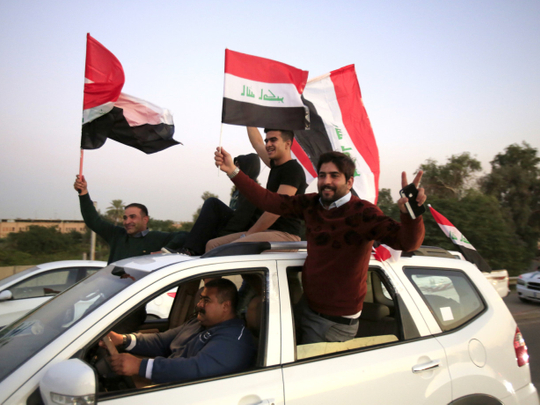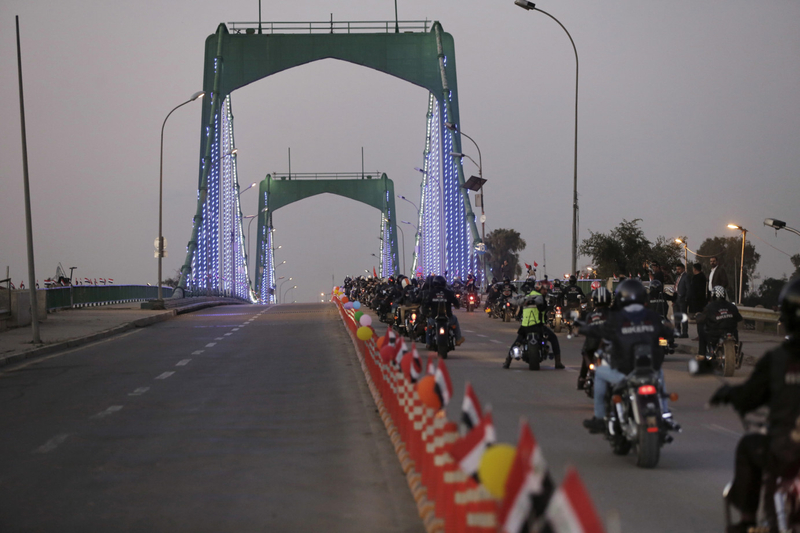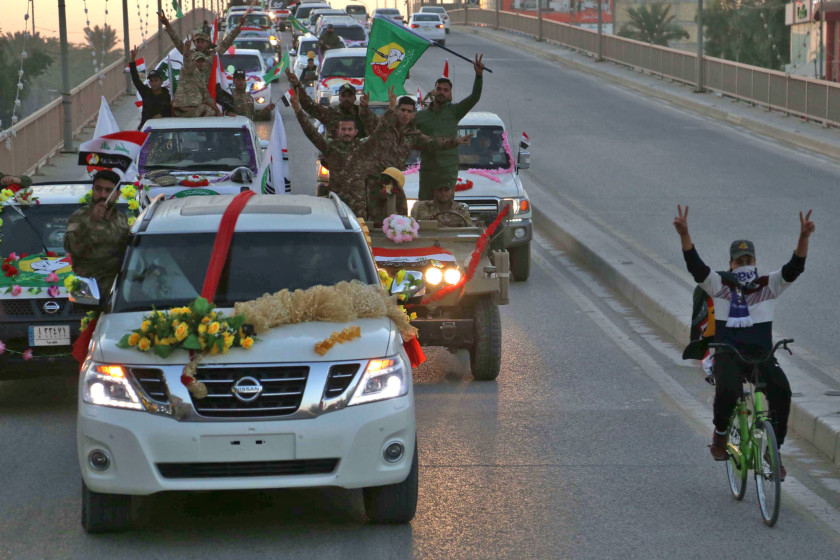
Baghdad: The blast walls and barbed wire came down. The checkpoints went away.
Fifteen years after it was sealed off, the heavily fortified neighbourhood in the heart of Baghdad was opened to the public Monday.
The neighbourhood, known as the Green Zone, had been cordoned off by the US military in 2003 to protect it from bombings during the war. The 4-square-mile patch of land contained Saddam Hussain’s palaces, which later housed the headquarters of the US occupation authorities and military, and the Parliament building, the seat of the new Iraqi government.
But its history and isolation made it a potent symbol first of the US occupation and later of the alienation felt by many Iraqis toward their own government, and Iraqi leaders have been promising to reopen it since the US military withdrew in 2011.
The reopening came on the anniversary of Iraq’s recapture of its northern city, Mosul, from Daesh, and officials said it would be a trial opening over the coming two weeks. Traffic was allowed on main thoroughfares but many side roads, where officials live and work, remained closed, and government buildings like the Parliament and Saddam’s old Republican Palace remained under heavy guard.

It was the second time in three years that Iraqi officials declared the Green Zone reopened, and there was no guarantee this reopening would last either. The government reopened it in 2015 for only a few days before closing it again after strong opposition from US officials, whose embassy and military headquarters were inside.
This time, the government has promised the reopening will be permanent.
Last month the government began taking down miles of towering concrete blast walls that surrounded the area, and blocked off many official buildings, former palaces, embassies and villas inside. The reopening had been scheduled for Nov. 25 but was postponed.
The reasons were not clear, but it was widely believed the US government and military had opposed the reopening.
A spokesman for the US military in Baghdad, Col. Sean J. Ryan, said reports that the United States opposed reopening the Green Zone were incorrect and there was no immediate risk to US personnel in the Green Zone.
“It’s a temporary, let’s-see-how-it-goes situation right now,” he said.
We’re here at the invitation of the government of Iraq, and they’re a sovereign nation. If that’s a decision they want to take, they can. But we’re always pretty vigilant with security.
“We’re here at the invitation of the government of Iraq, and they’re a sovereign nation. If that’s a decision they want to take, they can. But we’re always pretty vigilant with security.”
There has been no change to the heavy fortifications around the US Embassy, which lies on the southern edge of the area, but Monday, US soldiers were seen standing beside now-idle Green Zone checkpoints where no one previously could enter without biometric badges and vehicle passes.
The area was heavily protected during Saddam’s regime because of the palaces and residences for himself and family members, but it was not blocked off, since two of the capital’s busiest thoroughfares, Haifa Street and 14th of July Boulevard, traversed it.
A target for terror
Although the palaces were heavily bombed during the US invasion, they were chosen to house the US government’s occupation administration, headquarters and later the embassy.
_resources1_16a0853f69a_original-ratio.jpg)
As the resistance to the US presence took the form of more and more deadly bombings, many of them by suicide bombers, the entire area was sealed off to the public, subjecting many Iraqis to long and often impossible waits to obtain basic government services.
Other embassies and international agencies moved into the relative protection of the Green Zone, which US officials tried unsuccessfully to rename the “International Zone” beginning in late 2003.
It was a doomed rebranding as the Green Zone became enshrined in books, articles and at least one feature movie, “Green Zone” with Matt Damon.
Its towering blast walls, many more than 20 feet high and yards thick, became emblematic of an era in which extremists deployed massive bombs, often driven or carried by suicide attackers, which defeated normal protections such as armored cars and roadblocks.
As much as it was fortified and blocked off, the Green Zone remained a target.
In 2004, two suicide bombers managed to infiltrate the zone, killing dozens of Americans and others at a cafe and a souvenir market.
Three years later, the Parliament was bombed, killing one legislator.

For a period in 2008, the zone sustained rocket attacks almost daily by followers of radical Shiite cleric Moqtada Al Sadr, firing from the Sadr City neighbourhood across the Tigris River.
Rockets struck the Rashid Hotel there when Deputy Defense Secretary Paul Wolfowitz visited in 2003, killing a US soldier and wounding 17 others.
In 2016, anti-corruption protesters broke into the Green Zone, sacking the Parliament building and bringing the government to a standstill.
On Monday, Prime Minister Adel Abdul Mahdi made a televised address to celebrate the anniversary of the defeat of Daesh in Mosul, but he did not address the reopening of the Green Zone.
“Iraq reclaimed its lands, and the people reclaimed their will, and the citizens reclaimed their dignity, and all of us said no to terrorism and no to extremism and no to despotism, and we said yes to Iraq and yes to civilisation and yes to citizenship,” he said.
Monday was declared a national holiday, Victory Day, and a moment of silence was observed at noon.
Despite the celebration, Daesh still holds a small pocket of territory on the Syria-Iraq bourder, carries out up to 75 attacks a month throughout Iraq, and is operating underground in many parts of the country.
Attacks in Baghdad have become relatively infrequent, however, and the death toll, while still worrisome, has declined.
Traffic to ease
The most immediate impact of Monday’s opening would be to ease Baghdad’s chronic traffic jams, as Haifa Street and 14th of July Boulevard were major east-west and north-south arteries for the city of 8 million people.

A taxi driver, Muhammad Khalid, 28, who drove through the zone Monday said he was pleased at the improved traffic flow but otherwise disappointed. “I thought all of the Green Zone would be opened, not just parts of it,” he said. “I think it was just to show it to the media.”
Sayyid Ali Muhammad, a businessman, also visited. Although he was 32, he said, “I am seeing the Green Zone for the first time in my life. How is it possible, I’m standing here? Standing at the square where Saddam used to stand and salute people.”
Now that the US-era blast walls are down, many visitors also want to do away with the US name.
“I hated the name Green Zone,” said Mahdi Al Karkhi, head of Iraq’s soccer federation. Until the neighbourhood regains its original name, he said, the reopening will never be complete.
“They should call it Al Shawka again, and soon, inshallah.”








